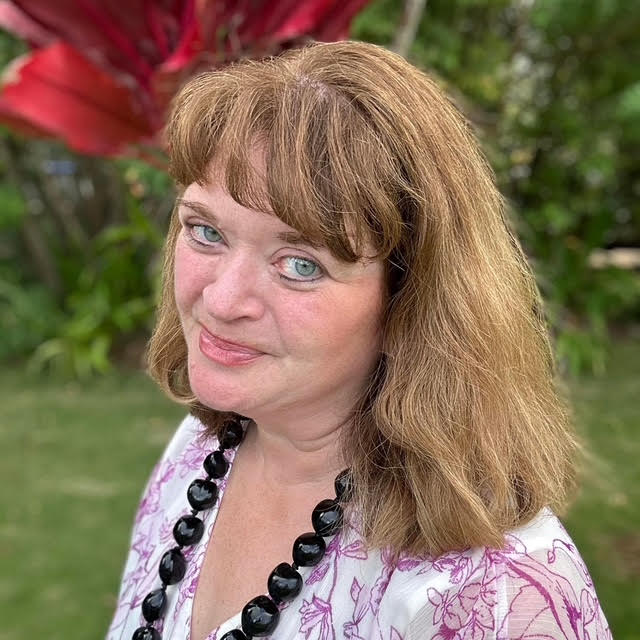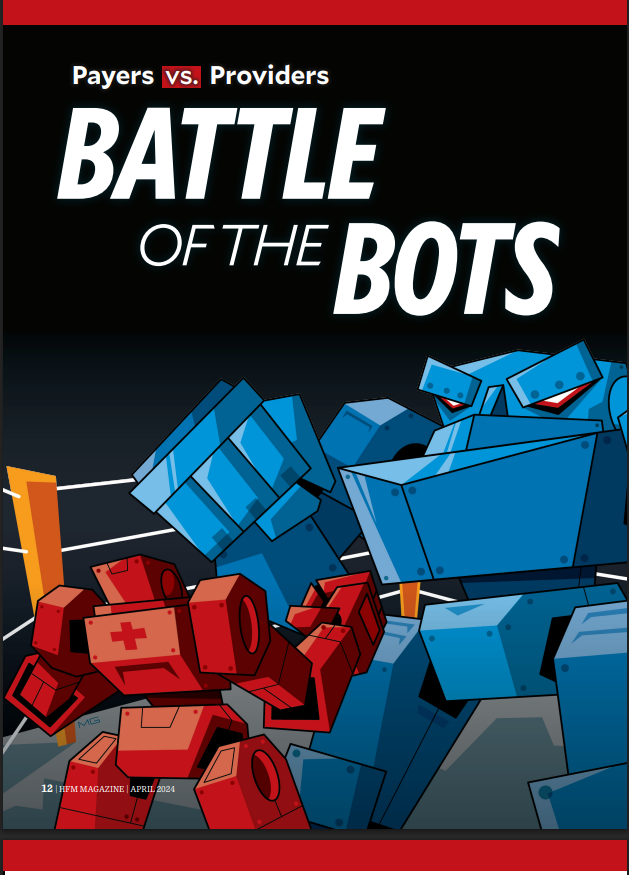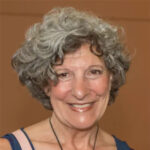Jeni Williams was shocked to be the first recipient of the American Society of Business Publication Editors’ 2025 Azbee Award of Excellence: National Winner for a body of work by a freelance journalist.
“I’m still stunned,” she wrote on the ASJA Facebook page, days after learning of the honor.

Williams, who joined ASJA in January 2025, won for a package of stories she wrote for the Healthcare Financial Management Association’s hfm magazine on “the toughest topics facing healthcare finance professionals over the past year.”
In an email Q&A, Williams shared how she got into reporting, how her Azbee award-winning articles came about, her advice for entering freelance work in writing contests, how she juggles freelancing with a full-time job, and more. The interview has been edited for length and clarity.
How did you start working as a journalist?
I began my career as a journalist in 1994, working as a bureau reporter for the Fort Wayne Journal-Gazette, and, later, as a general assignment reporter, then county government reporter for The Times of Northwest Indiana in Valparaiso. I gave birth to my son, Sam, almost two years to the day after graduating from Indiana University School of Journalism. I balanced being a reporter and a single mom pretty well that first year, running on autopilot. But the second year was harder. I ended up taking a job as a public relations specialist at the hospital in town, primarily for the consistent daytime hours, and began to write for children’s magazines on the side.
When did you go freelance and why?
For most of my freelance career, I have written freelance articles outside of a full-time job. My freelance career began as an effort to continue to write the types of articles I loved while committing to a full-time job that gave me the hours I needed as a single parent. I wrote for Guideposts for Kids, then Guideposts for Teens (later Sweet 16), both of which were based in Chesterton, Indiana, not far from home. I interviewed kids who were entrepreneurs, like a boy who launched his own line of swim toys, or who did amazing things, like a kid who met dozens of celebrities on his path to becoming a late-night TV host. I learned how to write as-told-to stories about teens who faced incredible challenges, like a girl in Central Indiana whose car was hit from behind as a train rushed along the tracks in front of her—and was dragged for more than a mile. I wrote children’s fiction, too, publishing short stories in Pockets magazine and selling one to Highlights for Children. I also wrote three (unpublished) middle-grade novels.
After eight years at the hospital, I felt pulled back to my editorial roots. I got a job as a senior editor at the Healthcare Financial Management Association, working my way up to managing editor, content development. Later, I became the American College of Healthcare Executives’ editor in chief, then worked as a business proposal writer for Navigant, a health care consulting firm—and discovered I am not a business proposal writer. I lasted about a year before deciding to become a full-time freelance writer, a job that allowed me to work from home rather than commute. It gave me more time to spend more time with my husband Greg, and our kids, two of whom, Kayley and Lily were in fifth and third grade at that time. I wrote for health care consulting firms and health care communications companies. I started to specialize in ghostwriting health tech articles, then health tech content strategy, then speaking submissions for health tech clients applying to speak at large conferences, too.
Three years ago, I accepted a full-time role as a senior director, content strategy with a dream client, Innsena. I continue to freelance for HFMA, writing in-depth feature articles on health care finance topics that intrigue me, as well as for other clients.
How did your portfolio of award-winning articles for the Healthcare Financial Management Association come about?
In late 2023, I decided to be really intentional about the freelance work I took in 2024. It stemmed from a desire to stretch myself in terms of my writing and reporting and to make space for projects that I felt mattered to the industry. I wasn’t completely happy with the work I’d done in 2023, and it wasn’t because I didn’t work hard; it wasn’t because the reporting wasn’t there. More than anything, I wanted to take a more active role in pursuing the work I really wanted to do. I wanted to end 2024 with no regrets.
All of this was occurring at a time when HFMA wanted to dig into the topic of curing payment confusion for consumers. Hospitals had focused on creating a financial experience that didn’t confuse, confound or enrage patients. Yet our sense was that many were still losing that battle—and we wanted to learn why.
HFMA also planned to explore a couple of topics that contributed to payment confusion in health care, like health plans’ use of AI to deny claims and the need for better payer-provider collaboration.
I took on these projects and dug in deep. With each article, I had regular check-ins with my editor, Paul Barr, to discuss what I was discovering during the interviews that was new and surprising.
These passion projects and the level of collaboration with the editorial team and the graphic design team led to a portfolio that resonated with readers—and one I was really proud of, too.
Your work has received multiple honors over the years. What’s the common thread?
Three common threads stand out:

Develop a highly collaborative partnership with your editor and the editorial team. When my editor and I were working on the introduction for “Battle of the Bots,” one of the articles I won the Azbee for, we even emailed each other on a Saturday night—while I was with my daughter and her friends, killing time before her birthday dinner—about how to approach the lead. I love being able to dig deep into the craft of writing and reporting, and I’m grateful he was my editor on four out of five of this year’s award-winning pieces.
Make sure someone from the graphic design team is involved in discussions about the articles you’re working on. I knew early on with “Battle of the Bots” that I wanted to tie in a “Rock ‘Em Sock ‘Em Robot” theme. Articulating that early led to a design that really complemented the piece.
Take a moment to reassess how you did after a project is complete or as part of an end-of-year review. There are always lessons to be learned, even from the pieces you’re proud of. The lessons I gained in planning and organization are ones I carried with me in writing a piece for HFMA on the health care CFO of the future earlier this year.
What advice would you give other freelance journalists about entering writing contests?
One of the best pieces of advice I’ve ever received came from ASBPE Vice President Brooke Bilyj during an ASBPE webinar last year. She said that it can be expensive to enter writing contests and if the entry fee is holding you back from entering your work, to ask the editor of the publication for which you wrote the article if they would consider paying it. I was really fortunate that HFMA entered my portfolio to be considered for ASBPE’s “Best Body of Work: Freelance Journalist” award.
How do you juggle multiple freelance writing types?
I continue to ghostwrite health tech articles on a variety of topics. I also write content marketing pieces for NineTen Media on feature topics like selecting the right hairdresser for a bridal party, what it’s like to work for a food rescue organization, and more. There are seasons when I burn the candle at both ends. I’m up very early writing, and I often write on the weekends, too. I pay close attention to signs that I might need a break, physically or mentally, from writing. There are some days when the words come much more slowly than usual, and I’ll try to power through it, but I also know that sometimes, what I really need is a brain break. I’ll walk my dogs and come back to it afterward, and if I’m still struggling, I may just need to try again the next morning. It’s amazing the difference a day can make.
Do you use AI in your work, and if so, how?
The only time I use AI in my work is in transcription, and I use Otter.ai to transcribe interviews. It’s not perfect, especially for highly technical pieces with acronyms like “EHR” for “electronic health records.” But it works well enough, and I can always go back and relisten to a portion of the interview for clarity.
When did you join ASJA and what’s the biggest benefit you get from being a member?
I joined ASJA earlier this year. I found out about ASJA in March 2024, and I’ve really enjoyed following the work of writers like Christina Hernandez Sherwood and reading the discussions on Facebook and LinkedIn. It’s a fantastic resource and community, and I’m grateful to be part of it.
In addition to “Freelance Fridays,” I appreciate that ASJA actively encourages those who are seeking writers for assignments to check out the “Find a Writer” resource. It’s a generous way to support members of this community.
What book are you reading or show are you watching?
I just started watching “The Bear” and am on season 2. I watch an episode each morning while riding my exercise bike. I’m also reading “The Serial Stowaway: Inspired by a True Story,” by my friend Robert Fromberg. Highly recommend!
Michelle Rafter is a business reporter turned ghostwriter based in Portland, Oregon. She’s ASJA’s publications chair and has been a member since 2010.

